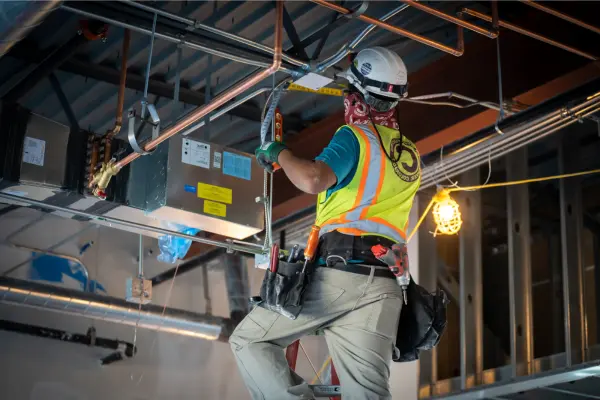The demand for electrical estimating services has never been higher, as the electrical industry in the USA faces increasing complexity and pressure to deliver accurate, cost-effective projects. With the rapid pace of technological advancements and evolving industry needs, electrical contractors and project managers require more than just traditional estimating methods. Electrical estimating services today must be faster, more precise, and capable of integrating new tools that enhance project efficiency. At Precision Estimator, we recognize these changes and are committed to leading the way in providing cutting-edge electrical estimating solutions that meet the growing demands of the modern construction industry.
The Changing Landscape of Electrical Estimating Services
Electrical estimating is evolving far beyond the traditional methods of pricing labor, materials, and overheads. Today’s electrical estimating services are highly integrated with advanced technology, including automation, artificial intelligence (AI), and cloud-based platforms, allowing contractors to deliver accurate estimates faster and more efficiently. As electrical projects become more complex, estimators need to rely on sophisticated tools to ensure precise budget forecasting, better collaboration, and the reduction of costly errors during construction.
Key trends shaping the future of electrical estimating services include:
- Automation and Artificial Intelligence (AI)
- Building Information Modeling (BIM) Integration
- Cloud-Based Estimating Solutions
- Big Data and Analytics
- Sustainability and Green Building Practices
These technological advances are reshaping how electrical estimating services are delivered, enabling contractors to remain competitive and better manage costs.
Automation and AI: Revolutionizing Electrical Estimating Services
The integration of automation and AI is one of the most significant breakthroughs in the realm of electrical estimating services. Traditional estimating methods often involved time-consuming processes, such as manually calculating labor hours, material quantities, and prices. With AI-driven tools, however, the process is faster, more accurate, and far more reliable. By using algorithms that analyze historical data, blueprints, and market trends, these advanced systems can automatically generate detailed estimates that reduce the risk of human error.
For instance, AI platforms can quickly cross-reference pricing databases, check material availability, and even predict potential project risks, offering estimators insights into potential cost fluctuations. The use of AI allows electrical estimating services to evolve from a static process to a dynamic, predictive one that anticipates future challenges, enabling contractors to offer more competitive bids.
BIM Integration: Enhancing the Precision of Electrical Estimating Services
Building Information Modeling (BIM) has become a game-changer for the construction industry, and electrical estimating services are no exception. BIM provides a 3D digital model that includes all the electrical components of a building, allowing estimators to perform detailed quantity takeoffs directly from the model. This integration makes estimating more accurate by eliminating the potential for oversight and allowing estimators to better visualize the electrical layout in relation to other building systems.
With BIM, electrical estimating services are no longer isolated from the design process. Estimators can work hand-in-hand with architects and engineers, ensuring that their estimates align with the design intent and that potential issues are identified early. For example, clashes between electrical systems and structural elements can be detected before the project begins, reducing change orders and ensuring the project stays on budget.
Cloud-Based Estimating Solutions: Collaborative Electrical Estimating Services
The shift to cloud-based estimating solutions is revolutionizing how electrical estimating services are delivered. With cloud platforms, electrical estimators can access and update project estimates in real time, enhancing collaboration between contractors, suppliers, and clients. This ensures that all stakeholders have the most current and accurate data available, regardless of their location.
Cloud-based systems also streamline workflows by allowing multiple users to work on estimates simultaneously. For instance, a project manager can adjust the scope of work, and the estimator can immediately update the estimate, ensuring everyone involved is on the same page. Moreover, these cloud solutions often come with integrated tools for tracking costs, managing contracts, and communicating with clients, making them an invaluable resource for electrical contractors managing multiple projects.
Big Data and Analytics: Optimizing Electrical Estimating Services
With the rise of big data, electrical estimating services now benefit from more informed decision-making. By analyzing vast amounts of project data—such as historical pricing, labor trends, and regional material costs—estimators can forecast future project costs more accurately. Data analytics tools can also help detect patterns, enabling estimators to make adjustments based on real-time market trends.
For example, big data can predict when certain materials will experience price increases or when labor shortages may occur in specific regions. By incorporating this data into the estimating process, electrical estimating services can proactively adjust bids and schedules to account for these fluctuations, ultimately improving project margins and reducing risks associated with budget overruns.
Sustainability and Green Building Practices: A New Dimension in Electrical Estimating Services
As environmental concerns grow, the demand for electrical estimating services that prioritize sustainability and energy efficiency is on the rise. Green building certifications, such as LEED (Leadership in Energy and Environmental Design), are becoming more common, and electrical estimating services need to account for these factors when preparing cost estimates.
For instance, when estimating the cost of electrical systems in a green building, estimators must consider energy-efficient lighting, renewable energy systems like solar panels, and advanced HVAC controls. While these systems might come with higher upfront costs, they often offer long-term savings through reduced energy consumption. Estimators need to balance these initial costs with the future savings to provide a comprehensive estimate that aligns with the project’s environmental goals.
Incorporating green practices into electrical estimating services is not just about reducing energy use—it’s about integrating sustainable building solutions from the start, ensuring that projects meet environmental standards while remaining cost-effective.
Conclusion:
The future of electrical estimating services is bright, with continuous advancements in technology reshaping how electrical projects are estimated and executed. By embracing automation, AI, BIM integration, cloud-based solutions, big data, and sustainability, electrical estimating services are becoming faster, more accurate, and more reliable than ever before. These innovations not only enhance the accuracy of estimates but also provide electrical contractors with the tools they need to manage costs, mitigate risks, and deliver high-quality projects.
At Precision Estimator, we are at the forefront of these changes, offering cutting-edge electrical estimating services designed to help contractors succeed in an increasingly competitive industry. Whether you are looking to streamline your estimating process, improve accuracy, or integrate new technologies, we are here to help.




